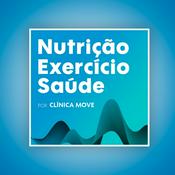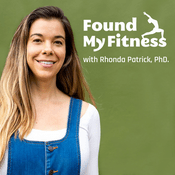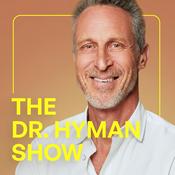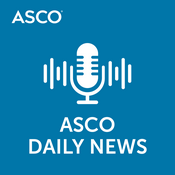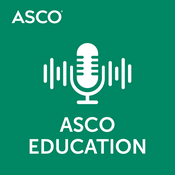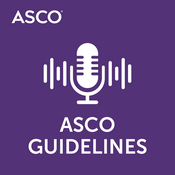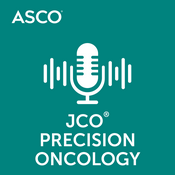Journal of Clinical Oncology (JCO) Podcast
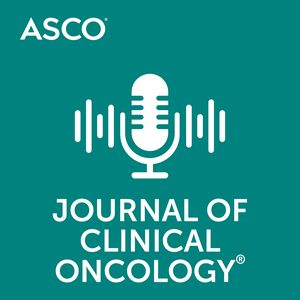
447 episódios

Milan Consensus Endpoints for Bladder Preservation in MIBC
11/12/2025 | 27min
Guests Dr. Andrea Necchi, Dr. Ashish Kamat and host Dr. Davide Soldato discuss JCO article "End Points for the Next-Generation Bladder-Sparing Perioperative Trials for Patients With Muscle-Invasive Bladder Cancer," focusing on the evolving treatment landscape of MIBC (muscle-invasive bladder cancer) and the need to properly design novel trials investigating non-operative management while including the incorporation of biomarkers and patient perspectives in clinical trials. TRANSCRIPT The disclosures for guests on this podcast can be found in the show notes. Dr. Davide Soldato: Hello and welcome to JCO After Hours, the podcast where we sit down with authors from some of the latest articles published in the Journal of Clinical Oncology. I am your host, Dr. Davide Soldato, medical oncologist at Ospedale San Martino in Genoa, Italy. Today we are joined by JCO authors Andrea Necchi, Associate Professor of Medical Oncology at University San Raffaele and Medical Oncology at Ospedale San Raffaele in Milan, Italy, and Ashish Kamat, Professor of Urologic Oncology and Cancer Research at University of Texas MD Anderson Cancer Center. Both Professor Necchi and Professor Kamat are internationally recognized experts in the field of genitourinary malignancy and particularly in bladder cancer. Today we will be discussing the article titled "Endpoints for the Next Generation Bladder-Sparing Perioperative Trials for Patients with Muscle-Invasive Bladder Cancer." So thank you for speaking with us, Professor Necchi and Professor Kamat. Dr. Andrea Necchi: Thank you, Davide, and thank you JCO for the opportunity. Dr. Ashish Kamat: Yeah, absolutely. It is a great honor and privilege to be discussing this very important article with you. So thank you for the invitation. Dr. Davide Soldato: The article that you just published in JCO reports the results of a consensus meeting that was held among experts in the field of genitourinary malignancy and particularly for bladder cancer. So the objective was really to define endpoints for a novel generation of trials among patients diagnosed with muscle-invasive bladder cancer. So my first question would be: what is the change in clinical practice and in clinical evidence that we have right now that prompted the start of such consensus in 2025? Dr. Andrea Necchi: So, we are living so many changes in the treatment paradigm of patients with muscle-invasive bladder cancer. In general, patients diagnosed with bladder cancer or urothelial cancer today, thanks to the advent of immunotherapy or immunotherapy combinations, and today thanks to the advent of novel antibody-drug conjugates like enfortumab vedotin in combination with immunotherapy that are actually changing the landscape of treatment of patients with metastatic disease and also are entering quite fast into the treatment paradigm of patients with organ-confined disease with a lot of clinical trials testing these combination therapies, neoadjuvantly or adjuvantly, before or after radical cystectomy. Having said that, by potentiating the efficacy of systemic therapy, an increasing number of patients that receive neoadjuvant therapy of any kind, at a certain point in time, result to have achieved a deep response to systemic therapy, evaluated radiologically with conventional imaging, CT scan or MRI, or with cystoscopy or with other urology-based techniques, urinary cytology, and so. And based on the fact that they achieve a complete response, so no residual viable disease after systemic therapy, they raise concern about the fact that they have to undergo surgery like radical cystectomy that is quite impactful for their quality of life and for the future of their lives after the surgery. So the point that the patients are raising, and the patients are raising this point, is primarily due to the efficacy of systemic therapy. And we have seen so many cases fortunately achieving a deep response. So the question about what to do with the patient that at a certain point, at the start with the commitment to radical cystectomy, but at a certain point in time change their mind towards something else if possible, depending on the fact that they have achieved a deep response, is something that is a question and is a need to which we have to provide data, information, and guidance in general to the patients. Dr. Davide Soldato: If we look at the population that the recommendations were formulated for, we are mainly speaking about patients who would be fit for cystectomy, and this is a very distinct population compared to those who are not fit for cystectomy, both from a medical oncology point of view but also from a urologic point of view in terms of surgery. So, can you explain a little bit to our listeners why you think that this distinction is critical and why you developed this recommendation especially for this population? Dr. Ashish Kamat: That is a very important distinction that you made. To build upon what Professor Necchi mentioned earlier, this question that we get from patients after neoadjuvant therapy or systemic therapy is not a new question. It has been something that they have been asking us for the last 20 or 30 years. "Do I really need to have my bladder taken out?" And patients who are especially not fit for surgery will sometimes say, "Do I need to have my bladder taken out? And if I cannot have my bladder taken out, am I going to just not have anything done?" Because the eligibility for radical cystectomy is also a moving target. Over the years with improvement in surgical technique, improvement in perioperative therapy, ERAS protocols, et cetera, it is really unusual for us to deny a patient the opportunity to have major surgery unless clearly they have very significant comorbid conditions. So I think this endeavor is more broadly encompassing of the patient population than what was evident in previous years. And I really want to give a shout out to Professor Necchi because what we did was, as part of the International Bladder Cancer Group and Professor Necchi is an integral part of the scientific advisory board, we broached this topic broadly during one of our discussions. And of course, Andrea always does this, he picks on a topic and then he says, "Okay, we need to discuss this really in detail," put together a multinational, multicenter collaborative group, but the driving force was our patients. Because our patients are constantly asking, "Do I need to lose my organ? Do I need to have radiation therapy?" which again, also, has a lot of side effects. So this was really to answer the question in today's day and age as to do we need to do local consolidation, and if so, in what way? It is not a new question, but we have newer therapies, newer technology, and better ways to answer this. So it is a much needed question that needs to be answered. And I think the distinction between non-surgical candidates and surgical candidates is a little bit blurred in today's day and age. Dr. Davide Soldato: What about the eligibility, for example, for cisplatin-based chemotherapy? Because I think that that is a very fundamental part of this type of strategy that we apply to patients with muscle-invasive bladder cancer. So we know that there are some caveats for proposing such treatment. And also this population was specifically defined inside this recommendation. Dr. Andrea Necchi: I think that the focus of our work is just to analyze what is happening after any type of systemic therapy the patient may get neoadjuvantly. So it is not actually a question of treatment eligibility or including cisplatin eligibility. This is an old question of today's practice and clinical trials. But regardless of what the patient received neoadjuvantly, the point that we have addressed in our consensus meeting was what to do next as a further step after systemic therapy or not. So basically we are- the consensus guidance includes all-comers, so patients to get any type of systemic therapy. So really non-selected based on specific features that determine a special eligibility to a special or a particular therapy. But an all-comer approach is always the winning approach for the translation to be in practice, an all-comer approach just focusing on what has happened after treatment and that we are assessing by the use of conventional imaging, MRI or CT, cystoscopy, urinary cytology, and trying to merge all together this information, all these features in a unique, shared, reliable definition of clinical complete response that could be used as a biomarker for the selection of newer therapies instead of pathological response that has been historically used, and maybe surrogate for the outcome, the long-term outcome and survival of these patients. Dr. Davide Soldato: A very specific point of the consensus was actually the definition of clinical complete response. As you were saying, this is actually a combination of several parameters including urinary cytology, the use of cross-sectional imaging, for example CT scan, but also the evaluation in cystoscopy of the bladder. Do you foresee any potential problems when applying this type of recommendation, not inside clinical trials, but in the context of routine clinical practice? Dr. Ashish Kamat: Absolutely. And that was the whole reason we had this consensus meeting. What happens nowadays in daily practice, and we see this every day at our center, we see patients referred to us. This definition or this sort of attempt to define clinical complete response is an ongoing issue. And urologists, medical oncologists, radiation oncologists are always looking to see, does my patient have a complete response? That definition and those paradigms have changed and evolved over the years. The FDA had a workshop many years ago looking at this very question. And it was to address the proposal that complete clinical response, which is a clinical definition, a clinical state, does this correlate with pathologic response? And with the technology and the systemic therapies we had then, the answer was 'no'. In fact, more patients got recurrent disease than did not get recurrent disease. And that is why, of course in the paper we mention the trials that looked at this question, the trials that evolved around this question. And I think the distinction between a clinical trial and daily practice is extremely important when we are looking at this definition per se. Because essentially what happens with this issue is that if the patient is not appropriately counseled, and if the physician does not do the appropriate clinical complete response assessment as Professor Necchi mentioned, right, cystoscopy, cytology, imaging, use of markers that are still in evolvement, we risk doing harm to the patient. So we caution in the paper too that this definition is not ready for prime time use. It is something that needs to be studied. It is a rigorous definition and currently we are recommending it for clinical trials. I am sure eventually it will trickle down into clinical practice, but that guidance was not the purpose of this consensus meeting. Dr. Davide Soldato: There are several parameters that are potentially evolving and could potentially enter inside of clinical practice. For example, you mentioned pelvic MRI and we have now very specific criteria, the VI-RADS criteria, we're able actually to diagnose and also to provide information. So along with these novel imaging techniques, we also know that there are novel biomarkers that could be explored, for example ctDNA and urinary DNA. So what I was wondering is, why were not these included inside the definition that you provide for clinical complete response? And do you think that, as we are designing these trials to potentially spare cystectomy for this patient, we should include these biomarkers very early so that we can actually provide better stratification for our patients and really propose this type of cystectomy-sparing strategy only to those where we are very confident that we have obtained a clinical complete response? Dr. Andrea Necchi: I would say you have just to wait. So a follow-up is ongoing and hard work is ongoing. At the time we met, at the time we established the meeting in mid-December last year, we had no information on the ctDNA data from major trials, with only a few exceptions. So we were just at the beginning of a story that was more than likely to change but still without numbers and without data from clinical trials. Now in just nine months or 10 months time, we have accumulated important data and newer data will be presented during just a few weeks and a few days regarding the ctDNA, circulating tumor DNA in particular, as a prognostic marker assessed baseline or assessed after neoadjuvant therapy. So the point is certainly well made and ctDNA is certainly well shaped to be incorporated in a future definition of clinical complete response. But you have to consider the fact that most of the data that we are accumulating related to ctDNA are about the post-cystectomy field or the metastatic field. So regarding neoadjuvant therapy, you know, we have neoadjuvant therapy in the context of bladder-sparing approach, basically we have no information. And the point that is emerging in our daily practice when using these biomarkers or in clinical trials, and the impression in general, is that it is a very strong biomarker associated with survival, but we absolutely do not know what is the performance of the test in the prediction of superficial bladder relapses, high-grade pTa relapse in the bladder that is left untouched in the patient. We are considering, and maybe it will be just a matter of further discussion, not just what is happening within the immediate endpoint of clinical CR, but also what is happening later with other survival endpoints. And for example, when looking at the type of events that we may see in this kind of bladder-sparing approaches, most of the events, also in the trials that have been published including the RETAIN study published in JCO, most of the events are related to superficial high-grade superficial non-muscle invasive relapses. So the ability to predict these types of events with ctDNA is completely unknown. Maybe, maybe other liquid biomarkers like urinary tumor DNA, utDNA, could be a bit better shaped in the prediction of this kind of events, you know. But we have still to build the story. So the question is good. The answer is yes, we will likely, more than likely incorporate liquid biomarkers in the definition, but we have to wait at least more data and more robust data in order to translate this information in routine practice, you know. Another consensus meeting is organized by IBCG and the same folks for November. This meeting will be primarily focused on the liquid biomarkers, the interpretation and use and approval and so of liquid biomarkers including bladder cancer. And we will likely be able to address all these, most of these open issues, so most of these points in the next meetings. Dr. Davide Soldato: In the consensus you say that probably clinical complete response is now ready to be included in early phase trials, so actually to test what is the efficacy of the regimens that is being evaluated inside of these trials. But you actually do very in-depth work of defining what are the most appropriate endpoints for later phase trials. So to be very specific, the phase three registrational trials that bring new regimens inside of this space. So I just wanted to hear a little bit about what was the definition for event-free survival, which you define as the most appropriate one for this type of trials. And as you were mentioning before, Professor Necchi, there is a very specific interest on the type of events that we observe, especially when we look at these superficial relapses inside of the bladder. So was this a very urgent matter of debate as we define which type of events should actually trigger event-free survival? And did you make a very thoughtful decision about why using this type of endpoint instead of others, for example metastasis-free survival? Dr. Ashish Kamat: Yeah, this was a matter of intense debate as you might imagine. And again, this is a moving target. So as Professor Necchi mentioned, we tend to partner with each other, our organizations, on having definitions of clinical complete response, biomarker, retreats, and then using that as a marker, and you might imagine this definition of what is appropriate event-free survival, what events matter to the patient, is something we have been talking about for two years. It was not just something that came up at the retreat. But at the retreat there was intense discussion. One of the things that we talked about was bladder-intact event-free survival because we are trying to spare the patient's bladder. And do we count bladder-intact event-free survival as something that is relevant? The patient advocates absolutely liked that, right? They wanted that. But then we also learned from some of the studies, for example from the RETAIN study, that the non-muscle invasive recurrences can actually lead to metastatic disease. It is not as benign when you have a patient with muscle-invasive bladder cancer that then develops a non-invasive tumor because maybe there is cancer growing underneath the surface that we don't detect when we look in the bladder. So a lot of those discussions were held, debated. It was a consensus. I have to say it was not 100% agreement on that particular definition, but it was broad consensus. And Andrea, do you want to clarify a little bit as to how we came about that consensus? Because I think this is a very important point we need to make. Dr. Andrea Necchi: We focused on a bit different definition of BI-EFS, Bladder-Intact Event-Free survival. Just stating EFS as an all-inclusive parameter including all type of high-grade relapse or progression or death that may happen to the patient. So that we were counting high-grade pTa, pT1, CIS relapses to the bladder and of course more deeper involvement in the muscle layer and so, and metastatic disease as a relapse. But the point is that as compared to the classical bladder-intact EFS definition of chemoradiation bladder-sparing approaches that is including muscle-invasive relapses only or death as events, we tried to be as inclusive as possible in order to be as much conservative as possible and to raise as higher the bar as possible for the success. And this is actually what the patients are asking us. So they are asking, "Okay, I can save my bladder, sparing radical cystectomy, but at which cost?" So in order to provide an answer, we have to be very, very cautious and be on the right shape, on the right position to say, "Okay, we have accomplished the most, the safest points, you know, by which you can proceed with the bladder-sparing." This is the first point. The other point is related to the MFS, metastasis-free survival that you have mentioned. For sure, it was recognized as a very important point for sure. But in the discussion was clear that our focus was in saving patients, curing the patient, and saving the bladder. Any single event, superficial event that may occur in the bladder-saving approaches of this kind may expose the patient to an extra risk of developing distant metastases, as it happened for example in the RETAIN study. So EFS defined as we have agreed and published, is actually a way of including or anticipating in a safest position the MFS. Because most or if not the entirety of the events of metastasis development in patients undergoing bladder-sparing after neoadjuvant systemic therapy were preceded by a superficial phase of disease relapse, you know. So I remember very, very few, or we can count just on the finger of one hand, the cases that have been reported in the literature developing de novo metastatic disease in the similar bladder-sparing approaches, in particular when using a maintenance immunotherapy strategy, you know, after they reach TURBT. So this is the reason why with all the limitation that Ashish has mentioned, with all the uncertainties that are still there, the nervousness that is still there, EFS, as defined in the protocol, as put in the paper, is to us at the moment is the safest way to use a primary endpoint in potentially registration trials of this kind with perioperative systemic therapy and response-adapted surgery. Dr. Ashish Kamat: And David, just to be absolutely clear for our listeners, right, so what was the event-free survival that we defined? Essentially it was a very inclusive definition. Event was defined as high-grade tumor persistence, recurrence, or progression during or after perioperative therapy, and receipt of any additional standard of care treatment including radical cystectomy, radiotherapy or even intravesical therapy. So this was done at the behest of our patient advocates because we really wanted to make a very robust definition that could be utilized appropriately as an adequate primary endpoint for both early and late phase bladder preservation trials. Dr. Davide Soldato: I think that it really highlights one of the points that I liked the most about this consensus is that it really incorporated the patient vision and a sort of shared decision making process when we are deciding how we want to design these trials that will explore this bladder-sparing surgery. And Professor Necchi mentioned something that I think will be also a very interesting question for trials that will be developed considering the activity of this combination that we are seeing right now, which is maintenance. Because right now our approach in the few cases where patients do not do any type of treatments after an induction with neoadjuvant treatments is basically represented by observation. So I was wondering if you think that the field will actually evolve to a sort of maintenance strategy even in patients that will achieve a complete clinical response? Dr. Andrea Necchi: We just mentioned briefly in the paper, this is a very important point that was touched during the discussion, and in particular was raised and discussed by FDA people participating in the meeting. And when looking at the data from the trials that were available and are still available thus far, we could provide a suggestion that maintenance immune therapy is the preferred approach in this kind of approach as it currently stands, as the data currently stand. Because the cleanest data towards the successful part of this journey is related to the studies that provided a kind of maintenance therapy, like the study with nivolumab or the RETAIN-2 study with maintenance immune therapy instead of RETAIN study that was just stopping treatment until surgery with MVAC chemotherapy. So in general the impression is that maintenance therapy may help in reducing the type of events, including the events that we incorporate in the EFS definition that we mentioned in the paper. The point that you mentioned is very important because on the other side we have a problem, a big problem of affordability and cost of the treatment. The de-escalation trials are an urgent need and represent a call for the studies. Unfortunately, as you mentioned, this is something that moves beyond the possibilities of this type of consensus because we don't have data and we have to accumulate data from clinical trials prior to saying, "Okay, certain patients could de-escalate therapy and stop therapy and some other not." So we are still at the very beginning. So we can do- we can discuss about this in the radical cystectomy paradigm but not in the bladder-sparing paradigm, you know. But this is for sure a point, a discussion point that will be taken, pretty well taken in one year or two year projection. Dr. Davide Soldato: I was wondering if in the consensus, considering that patient advocates and patient associations were also involved, did you decide to actually suggest the inclusion of patient-reported outcomes or the evaluation of shared decision-making in the development of this trial really as endpoints that should matter as much or as much as possible as event-free survival and clinical complete response? Dr. Ashish Kamat: Oh yeah, absolutely. We had patient advocates, we had the World Bladder Cancer Patient Coalition, Bladder Cancer Advocacy Network, patient representatives. And we always consider this. Shared decision-making is actually the impetus behind why these efforts have been launched, right? So it is the shared decision-making that is very, very important. It is the driving force behind what we do. And it is worth noting, for example, for the design of such studies, regulatory agencies consider response-based endpoints or overall survival as primary endpoints. But the patient advocates consider quality of life to be just as important, if not more important sometimes than overall survival numbers. Because patient advocates will say, "Well if I live longer but I'm miserable living longer, yes that works for regulatory agencies but doesn't work for us." So PROs clearly are very, very important. And, in fact, we just literally had a meeting in Houston, the IBCG meeting where PROs were a main point of what we discussed. So incorporating PROs in everything we do, not just this but everything we do, Dr. Necchi, myself, everybody involved in these fields realizes it is very, very important. So absolutely. Dr. Davide Soldato: I want to thank again Professor Necchi and Professor Kamat for joining us today. Dr. Andrea Necchi: Thank you. Dr. Ashish Kamat: It is our pleasure. Dr. Davide Soldato: Thanks again and we appreciate you sharing more on your JCO article titled "Endpoints for the Next Generation Bladder-Sparing Perioperative Trials for Patients with Muscle-Invasive Bladder Cancer." If you enjoy our show, please leave us a rating and review and be sure to come back for another episode. You can find all ASCO shows at asco.org/podcast. The purpose of this podcast is to educate and to inform. This is not a substitute for professional medical care and is not intended for use in the diagnosis or treatment of individual conditions. Guests on this podcast express their own opinions, experience, and conclusions. Guest statements on the podcast do not express the opinions of ASCO. The mention of any product, service, organization, activity, or therapy should not be construed as an ASCO endorsement.

JCO at 2025 ASH: Pirtobrutinib in Untreated CLL
09/12/2025 | 20min
JCO Editor-in-Chief Dr. Jonathan Friedberg is joined by colleagues Dr. Jennifer Woyach, Dr. Wojciech Jurczak, and Dr. Matthew Davids to discuss simultaneous publications presented at ASH 2025 on pertibrutinib, a new upfront treatment option for patients with chronic lymphocytic leukemia. TRANSCRIPT The disclosures for guests on this podcast can be found in the show notes. Dr. Jonathan Friedberg: I'm Jonathan Friedberg, editor of Journal of Clinical Oncology, and welcome to JCO After Hours, where we are covering two manuscripts that were presented at the American Society of Hematology meeting 2025 in Orlando, Florida. I am delighted to be joined by colleagues on this call to discuss these pivotal manuscripts which cover the topic of pirtobrutinib, a new upfront treatment option for patients with chronic lymphocytic leukemia. I will first just introduce our guests, Dr. Woyach. Dr. Jennifer Woyach: Hi, my name is Jennifer Woyach. I am from the Ohio State University. Dr. Wojciech Jurczak: Hello, I am Wojciech Jurczak, working at the National Research Institute of Oncology in Krakow, Poland. Dr. Matthew Davids: Hi, I am Matthew Davids from Dana-Farber Cancer Institute in Boston. Dr. Jonathan Friedberg: We are going to start by just learning a little bit about these two trials that were both large, randomized phase 3 studies that I think answered some definitive questions. We will start with your study, Jennifer. If you could just describe the design of your study and the patient population. Dr. Jennifer Woyach: Absolutely. So this is the BRUIN CLL-314 study, and this is a phase 3 randomized trial of pirtobrutinib versus ibrutinib in patients with CLL or SLL who had not previously been treated with a covalent BTK inhibitor. The patients were both treatment-naive and relapsed/refractory, about one-third of the patients treatment-naive, the rest relapsed/refractory, and they were stratified based upon 17p deletion and the number of prior lines of therapy. The primary objective was looking at non-inferiority of overall response rate over the entire treated population as well as the relapsed/refractory patient population. Key secondary objectives included progression-free survival in the intention-to-treat and the smaller relapsed/refractory and treatment-naive populations. Dr. Jonathan Friedberg: And just comment a little bit on the risk of the patients. Dr. Jennifer Woyach: This study was fairly typical of this cohort of patients. Within the relapsed/refractory patient population, there was a median of one prior line of therapy in each of the groups, up to nine prior lines of therapy in the patients included on the study. For the overall cohort, about two-thirds of the patients were IGHV unmutated, about 15% had 17p deletion, 30% had TP53 mutations, and about 35% to 40% had a complex karyotype, which is three or more abnormalities. Dr. Jonathan Friedberg: And what were your findings? Dr. Jennifer Woyach: Regarding the primary outcome, which is the focus of the publication, we did find that pirtobrutinib was indeed non-inferior and actually superior to ibrutinib for overall response rate throughout the entire patient population and in both the relapsed/refractory and treatment-naive cohorts. PFS is a little bit immature at this time but is trending towards also being significantly better in pirtobrutinib-treated patients compared with ibrutinib-treated patients. Probably most significantly, we found this to be the case in the treatment-naive cohort where there was a striking trend to an advantage of pirtobrutinib versus ibrutinib. Dr. Jonathan Friedberg: And the follow-up that you have on that progression-free survival? Dr. Jennifer Woyach: So we have about 18 months follow-up on progression-free survival. Dr. Jonathan Friedberg: The second study, Wojciech, can you just go through the design and patient population that you treated? Dr. Wojciech Jurczak: Thank you, Dr. Friedberg, for this question. So the BRUIN CLL-313 study was, in fact, the first phase 3 study with pirtobrutinib in exclusively untreated CLL patients. It was a randomized study where we challenged pirtobrutinib versus bendamustine-rituximab. At the time we designed the protocol, bendamustine-rituximab was an option as a standard of care, and Bruton tyrosine kinase monotherapy was used far more commonly than nowadays. The primary target of the study was progression-free survival. We took all untreated patients except for those with 17p deletions. Therefore, it is a good representation for intermediate risk. We had about 60% of the population, 56 to be precise, which was unmutated, evenly distributed into two treatment arms. 17p deleted cases were excluded, but we had about 7% and 8% of TP53 mutated patients as well as about 11% and 7%, respectively, in the pirtobrutinib and bendamustine-rituximab arm of patients with complex karyotype. The progression-free survival was in favor of pirtobrutinib and was assessed by an independent review committee. What is important is that the progression-free survival of the bendamustine-rituximab arm was actually similar to the other studies addressing the same questions, like the comparison with ibrutinib in the ALLIANCE study or zanubrutinib in the SEQUOIA study. What was different was the hazard ratio. In our study, it was 0.20. It was one of the longest effect sizes noted in the frontline BTK study. It represented an 80% reduction in progression-free survival or death. If we compare it to ibrutinib or zanubrutinib, it was 0.39 and 0.42 respectively. Presumably, this great effect contributed towards a trend of overall survival difference. Although survival data are not mature enough, there is a clear trend represented by three patients we lost in the pirtobrutinib arm versus 10 patients lost in the bendamustine-rituximab arm. This trend in overall survival is becoming statistically significant despite the fact that there was a possibility of crossover, and effectively 52.9 patients, which means 18 out of 34 patients relapsing in the bendamustine-rituximab arm, were treated by pirtobrutinib. Dr. Jonathan Friedberg: I am going to turn it over to Matt. The question is: why study pirtobrutinib in this patient population? And then with these two studies, how do you find the patients that were treated, are they representative of people who you see? And do you see this maybe being approved and more widely available? Dr. Matthew Davids: I think in terms of the first question, why study this in a frontline population, we have seen very impressive data with pirtobrutinib in a very difficult-to-treat population of CLL patients. This was from the original BRUIN phase 1/2 study where most of the patients had at least two or three lines of therapy, often both a covalent BTK inhibitor and the BCL2 inhibitor venetoclax, and yet they were still responding to pirtobrutinib. The drug was also very well tolerated in that early phase experience. And actually, we have seen phase 3 data from the BRUIN 321 study comparing pirtobrutinib to bendamustine and rituximab in a relapse population as well. So I think that really motivated these studies to look at pirtobrutinib as a first therapy. You know, often in other cancers of course, we want to use our best therapy first, and I think these studies are an initial step at looking at that. In terms of the second question around the patient population, these are pretty representative patient populations, I would say, for most frontline CLL studies. We see patients who are a bit younger and fitter than sort of the general population of CLL patients who are treated in clinical practice, and I think that is true here as well. Median age in the sort of mid-60s here is a bit younger than the typical patients we are treating in practice. But that is not different from other CLL frontline studies that we have seen recently, so I think it makes it a little bit easier as we kind of think across studies to feel comfortable that these are relatively similar populations. Dr. Jonathan Friedberg: How do you see this either getting regulatory approval or potentially being used compared to current standard of care options? Dr. Matthew Davids: So my understanding is that both of these trials were designed with registrational intent in the frontline setting, and they are both positive studies. That is certainly very encouraging in terms of the potential for an approval here. We have seen in terms of the FDA recently some concerns around the proportion of patients who are coming from North America, and my understanding is that is relatively low on these two studies. But nonetheless, the datasets are very impressive, and so I think it is certainly supportive of regulatory approval for frontline pirtobrutinib. Dr. Jonathan Friedberg: I will ask Jennifer a question. The control arm in your study was ibrutinib, and I think many in the audience may recognize that newer, second-generation BTK inhibitors like acalabrutinib and zanubrutinib are more frequently used now if monotherapy is decided. How do you respond to that, and how would you put your results in your pirtobrutinib arm in context with what has been observed with those agents? Dr. Jennifer Woyach: Yeah, that is a great question. Even though in the United States we are predominantly using acalabrutinib or zanubrutinib when choosing a monotherapy BTK inhibitor, this is actually not the case throughout the entire world where ibrutinib is still used very frequently. The head-to-head studies of both acalabrutinib and zanubrutinib compared to ibrutinib have shown us pretty well what the safety profile and efficacy profile of the second-generation BTK inhibitors is. So even though we do not have a head-to-head study of acalabrutinib or zanubrutinib versus pirtobrutinib, I think, given the entirety of data that we have with all of the covalent BTK inhibitors, I think we can safely look at the pirtobrutinib arm here, how the ibrutinib arm compares or performs in context with those other clinical trials. And though we really can not say anything about pirtobrutinib versus acalabrutinib or zanubrutinib, I think we can still get a good idea of what might be the clinical scenarios in which you might want to choose pirtobrutinib. Dr. Jonathan Friedberg: And Wojciech, do you agree with that? Obviously, I think you have acknowledged that chemoimmunotherapy is rarely used anymore as part of upfront treatment for CLL. So, I guess a similar question. If you were to put the pirtobrutinib result in your study in context with, I guess, more contemporary type controls, would you agree that it is competitive? Dr. Wojciech Jurczak: Well, I think that that was the last study ever where bendamustine-rituximab was used as a comparator arm. So we should notice that smashing difference. Because if we look at the progression-free survival at two years, we have 93.4% in pirtobrutinib arm versus 70.7% in bendamustine-rituximab arm. Bendamustine-rituximab arm did the same as in the other trials, like ALLIANCE or SEQUOIA. Pirtobrutinib did exceptionally well, as pirto is not just the very best BTK inhibitor overcoming the resistance, but perhaps even more important for the first line, it is very well tolerated and is a very selective drug. Now, if we look at treatment-related adverse events, the discontinuation rate, they were hardly ever seen. If we compared the adverse events in exposure-adjusted incidence, literally all adverse events were two or three times higher in bendamustine-rituximab arm except for the bleeding tendency, which however was predominantly in CTCAE grade 1 and 2 with just 0.7% of grade 3 hemorrhage. Therefore, I think that we should actually put the best and the safest drugs upfront if we may, and pirtobrutinib is, or should be, the first choice if we choose monotherapy. Now, I understand that we are not presenting you the data of pirtobrutinib in combination with anti-CD20 or with BCL2 inhibitors, but that is to come. Dr. Jonathan Friedberg: Matt, how would you envision, were regulatory approval granted and this were an option, using this in the upfront patient population? Is there anybody who you would preferentially use this or start on this treatment? Or would this be something that you would tend to reserve for second line? Dr. Matthew Davids: So I would say that in general for most of my patients who would want to start with a continuous BTK inhibitor, I would still use a covalent BTK inhibitor, and I say that for a couple of reasons despite the very promising data from these studies. The first is that the follow-up for both of these phase 3 trials is still quite short, in the range of a median 18 to 24 months. And we know that CLL is a marathon, not a sprint, and these patients are going to probably be living for a very long time. And we do have much longer follow-up from the covalent BTK inhibitors, median of 10-year follow-up with ibrutinib and five to six years with zanubrutinib and acalabrutinib respectively. And you know, I do not think that the pirtobrutinib is going to fall off a cliff after two years, but on the other hand, I think there is a lot of value to long-term data in this disease, and that is why I think for most of my patients I would stick with covalent BTK inhibitors. But the other important factor that we need to consider is patients who are younger and may have many different CLL treatments over the years. We have to be very careful, I think, about how we sequence these drugs. We know right now that we can start with covalent BTK inhibitors and then subsequently patients will respond well to the non-covalent inhibitor pirtobrutinib in later lines of therapy. But right now we do not have prospective data the other way around. So how will the patients on these studies who progress on pirtobrutinib respond to covalent BTK inhibitors? We do not know yet. There have not been a lot of progression events, which is great, but we would like to see some data in that respect to feel more comfortable with that sequence. Now, I do think that particularly for older patients and those who have significant cardiovascular comorbidities, if they wanted to go on a continuous BTK inhibitor, I do think these data really strongly support using pirtobrutinib as the BTK inhibitor of choice in that population. In particular, the cardiovascular risks with pirtobrutinib seem to be quite low. I was very struck in the comparison with BR that the rate of AFib was equivalent between the two arms of the study. And that is really the first time we have seen that with any of these BTK inhibitors, no elevated risk of AFib in a randomized study. I think that is the population where it will get the most traction first, is the upfront, sort of older patient with significant cardiovascular comorbidities. And as the data from these studies mature, I think that we will start to see more widespread use of pirtobrutinib in the frontline setting. Dr. Jonathan Friedberg: Jennifer, I am just curious if you have any personal experience or heard anecdotally about after progression on pirtobrutinib the use of other BTK inhibitors and whether there is a growing experience there. Dr. Jennifer Woyach: I do not think that there is much clinical experience, you know, as Matt alluded to, it certainly has not been tested yet. There has been some data in relapsed CLL suggesting that in people who have resistance mutations to covalent BTK inhibitors after treatment with pirtobrutinib, sometimes those mutations go away. I think most of us are concerned that they are probably not actually gone but maybe in compartments that we just have not sampled, suggesting that sort of approach where you might sequence a covalent inhibitor after a non-covalent in somebody who had already been resistant probably would not work that well. But, you know, in this setting where people had never been exposed to a covalent BTK inhibitor before, we really have no idea what the resistance patterns are going to be like. We assume they will be the same as what we have seen in relapsed CLL, but I think we just need some longer follow-up to know for sure. Dr. Wojciech Jurczak: If I may confront Dr. Davids about the use of covalent BTK inhibitors upfront, well, I think that we should abandon the idea of using the first and the second and the third generation, at least if we don't have medical lines. If we endlessly block the same pathway, it is not going to be effective. So if pirtobrutinib gets approval in first, second line, we do not necessarily have to use it in the first line. I am not here in a position to defend that we should treat patients with pirtobrutinib upfront and not BCL2 time-limited regimen. However, the way I look at CLL patients when choosing therapy is not just how should I treat them now, but what would be the best regimen in 5, 10 years if I have to re-treat them. And in some instances, the idea may be that in this setting we would like to have a BTK inhibitor upfront to have a BCL2 inhibitor later to make it time-limited. Although I understand and I agree with Matthew that if we have an elderly, fragile population, then the charm of having a drug taken once a day in a tablet with literally few cardiovascular adverse events might be an option. Dr. Jonathan Friedberg: And I will give Matt the last word whether he wants to respond to that, and also just as a forward-looking issue, I know both investigators have implied that there will be future studies looking at combinations with pirtobrutinib, and if you have any sense as to what you would be looking for there. Dr. Matthew Davids: The field really is heading toward time-limited therapy for most patients, I would say. There is a bit of a discrepancy right now in the field between sort of what we are doing in academic practice and what is done sort of more widely in community practice. And so right now we are going to see evolving datasets comparing these approaches. We are already seeing data now from the CLL17 study with ibrutinib comparing continuous to time-limited venetoclax-based therapy, and we are seeing similar efficacy benefits from these time-limited therapies without the need for continuous treatment. And so that is where I think some of the future studies with pirtobrutinib combining it with venetoclax and other partners are so important. Fortunately, several of these studies are already ongoing, including a phase 3 trial called CLL18, which is looking at pirtobrutinib with venetoclax, comparing that to venetoclax and obinutuzumab. So I am optimistic that we are going to be developing these very robust datasets where we can actually use pirtobrutinib in the frontline setting as a time-limited therapy as a component of a multi-drug regimen. So far, those early data are very promising. Dr. Wojciech Jurczak: Perhaps last but not least, in a single center we have treated over 300 patients with pirtobrutinib. So eventually some of them relapsed. And I must say that our experience on BCL2 inhibitors, not just venetoclax but including sonrotoclax, are appealingly good. Therefore, by using pirtobrutinib even earlier, we do not block the efficacy of other compounds. Dr. Jonathan Friedberg: All right. Well, I want to thank all of our speakers. I also want to congratulate our two guests who presented these very influential papers at the ASH Annual Meeting, and chose to publish them in JCO, so we thank you for that, and Dr. Davids for your commentary - really appreciated. That is this episode of JCO After Hours. Thank you for your attention. The purpose of this podcast is to educate and to inform. This is not a substitute for professional medical care and is not intended for use in the diagnosis or treatment of individual conditions. Guests on this podcast express their own opinions, experience, and conclusions. Guest statements on the podcast do not express the opinions of ASCO. The mention of any product, service, organization, activity, or therapy should not be construed as an ASCO endorsement. Disclosures Dr. Wojciech Jurczak Consulting or Advisory Role: BeiGene, Lilly, Abbvie/Genentech, Takeda, Roche, AstraZeneca Research Funding: Roche, Takeda, Janssen-Cilag, BeiGene, AstraZeneca, Lilly, Abbvie/Genentech Dr. Jennifer Woyach Consulting or Advisory Role: Pharmacyclics, Janssen, AstraZeneca, Beigene, Loxo, Newave Pharmaceutical, Genentech, Abbvie, Merck Research Funding: Company name: Janssen, Schrodinger, beone, Abbvie, Merck, Loxo/Lilly Dr. Matthew Davids Honoraria: Curio Science, Aptitude Health, Bio Ascend, PlatformQ Health, Plexus Consulting or Advisory Role: Genentech, Janssen, Abbvie, AstraZeneca, Adaptive Biotechnologies, Ascentage Pharma, BeiGene, Lilly, Bristol-Myers Squibb, Genmab, Merck, MEI Pharma, Nuvalent, Inc., Galapagos NV, Schroedinger Research Funding: Ascentage Pharma, Novartis, MEI Pharma, AstraZeneca

JCO at ASH 2025: A New Validated Staging System for AL Amyloidosis: AL-ISS
07/12/2025 | 15min
JCO Editorial Fellow Peter Li and author Dr. Jahanzaib Khwaja discuss the ASH 2025 Simultaneous Publication article, "A New Validated Staging System for AL Amyloidosis With Stage lllC Defining Ultra-Poor Risk: AL International Staging System." TRANSCRIPT The disclosures for guests on this podcast can be found in the show notes. Dr. Peter Li: Welcome to this episode of JCO Article Insights. I am Dr. Peter Li, JCO's Editorial Fellow, and today, I am joined by Dr. Jahanzaib Khwaja on a new validated staging system on AL amyloidosis with stage lllC defining ultra-poor risk, AL International Staging System. This is a simultaneous publication that will be presented at this year's ASH Conference. At the time of this recording, our guest has disclosures that will be linked in the transcript. So, Dr. Khwaja, let's start off first: What would you say is the significance of your study? Dr. Jahanzaib Khwaja: Thank you very much. This is an important study in that, in the current treatment era, we have really improved outcomes of patients with systemic AL amyloidosis. Traditionally, the staging systems that have been employed, which are the Mayo 2012 and the European modification 2016, have been founded in eras where there were historic treatment protocols. So the significance of this new staging system is looking at outcomes of patients in the modern treatment era. That is patients who are treated with daratumumab-based treatments in the first line. And this is kind of the largest study which is externally validating a new prognostic model in the current treatment era with modern outcomes. Dr. Peter Li: Can you tell our listeners what is different about your new staging system? Dr. Jahanzaib Khwaja: The traditional staging systems, the Mayo 2012 and the European modification of 2016, looked at outcomes of patients with systemic AL amyloidosis with historic treatment protocols. And we know that they looked at outcomes according to an NT-proBNP and troponin, and in the Mayo 2012, they looked at it with the addition of the dFLC, which is the difference in the involved and uninvolved free light chain. Over the years, we have seen that outcomes have improved, and over decades, actually, outcomes are much better when we compare them to the previous decade. If we look at current treatment approaches, those traditional staging systems inadequately determine the poorest prognostic risk. So they are unable to tell us those who are going to perform poorly. Our current new validated staging system looks at the traditional NT-proBNP and troponin but uses the addition of the longitudinal strain. This is an echocardiographic parameter, and it is used widely in treatment centers who treat amyloidosis. This really identifies those ultra-high risk patients, and these are the patients who will perform poorly in current treatment protocols. And why is that important? Well, we need a robust staging system in the current treatment era which can stratify patients who will do well but also stratify those patients who do not do well. Because that is important for counseling patients, for risk stratification, for treatment approaches, and in the future, for designing clinical trials. Dr. Peter Li: And that is referring to the longitudinal strain greater than -9% and NT-proBNP greater than 8,500 and then the high-sensitivity troponins greater than 50, which will define the new staging system. Can you talk more about how you picked these cutoffs and also what that alludes to in terms of the outcomes that you have discovered in this age of daratumumab-based therapy? Dr. Jahanzaib Khwaja: Yeah, that is a really excellent question because we have aimed to build upon traditional staging systems. So clinicians have used these traditional models for many, many years, and they have robustly underpinned our stratification of patients and how we counsel patients. So we didn't want to change some of these well-established thresholds, but we wanted to test them in the current treatment era. So the NT-proBNP of 8,500 and the high-sensitivity troponin of 50 were the traditionally used thresholds. And they actually stand the test of time. But we found that longitudinal strain additionally and independently predicts outcome independent of these other biomarkers. It is independent actually as a continuous variable, so you can cut this at a number of different stratification points and find independence. But we wanted to determine and discriminate those with the poorest outcomes. So we validated a longitudinal strain threshold of greater than -9% by deriving this from a dataset of patients with the traditionally highest risk. Those are with European stage lllB. And looked at the optimal threshold with time-dependent ROC analysis. So we did this in our derivation cohort and then validated this externally in our external validation cohort amongst a number of centers in Europe, in the US, and in the UK. And it is important to note because longitudinal strain is an echocardiographic parameter, and traditionally the limitations are considered to be inter-vendor and inter-operator variability and intra-operator variability, and there are challenges with reproducibility of some of these measurements. So that is often cited as a limitation. But we found, when we have externally validated this across different centers using different platforms, actually the threshold of -9% is independently predictive of poorer outcomes independent of the traditional NT-proBNP and troponin thresholds, and it is robustly predictive of poorest outcomes. We know that those with stage lllC have a median overall survival of 4 to 7 months in the modern treatment era. And if we sub-stratify these by patients treated with daratumumab, outcomes have improved, but still, even if we look at daratumumab-treated patients, one-year overall survival is still only around 50 percent. So these are a poor risk group in the modern treatment era. Dr. Peter Li: Which kind of makes sense in a way because this kind of predicts whether they have amyloid-related cardiomyopathy. So I think this all tracks with our listeners. But given the poor outcomes even with daratumumab-based therapies, do you think this new staging system would change practice, if at all? Dr. Jahanzaib Khwaja: Yeah, I think that is a really good point because I think it comes to the question of why we use a staging system. What are its applications? I think one of the key things we think about in the clinic is how do we counsel patients when we first talk to them about their diagnosis. So there is a lot of information, but predominantly people want to know, what is my outlook going to look like? And as I say, in the bortezomib treatment era, 2010 to 2020, we used to say you have stage lllB, you have very poor outcomes, median survival maybe around six months. We have shown here that actually those with lllB have much better outcomes definitely over 12 months, up to 24 months in those with daratumumab-based therapies. So we need to counsel them in a different way. We then also need to say, "Well, who are the ultra-high risk?" So we said those with the longitudinal strain of greater than -9% with the traditional NT-proBNP and troponin cutoffs. And those patients will have poor outcomes. We need to talk about palliation. We need to talk about alternate treatment approaches. And then importantly for the community is about treatment and clinical trial design. So again, traditionally the traditional high-risk group lllB used to be considered an exclusion for all major trials. So these were excluded in the ANDROMEDA study, which led to the approval of daratumumab-based therapy, and multiple other trials. And we show here that actually patients with lllB should not be excluded from these studies because they do have good outcomes. And I think we make the important point that those with lllC, who do have poor outcomes, they need a different treatment approach, and we need to think about stratifying these patients differently. So perhaps the next modality of treatment will be the anti-fibril antibodies or a mode of treatment which can clear antibodies or clear the amyloid fibrils from the organs and reduce the organ toxicity early on. We know that those with lllC have poor outcomes particularly within the first year, and organ dysfunction really predominates here. So a different treatment approach is required, and we need to design trials specifically for these patients which look beyond anti-plasma cell clone therapy but also look at clearing the amyloid fibrils and improving organ function as this is predominantly the cause of death in these patients. Dr. Peter Li: That's an excellent point right there. Do you foresee any limitations to this new staging system, or can you comment on is there potentially a better way to refine this staging criteria in the future? Dr. Jahanzaib Khwaja: Yeah, I think that is a really excellent point to consider, that staging systems always need refining across treatment eras. So we have looked at the bortezomib era, and then we have validated this in the daratumumab-based era. We know that amongst different countries access to treatment varies. We know that there are a number of factors which determine your health-related outcomes. That's access to healthcare, speed of diagnosis, access to tertiary diagnostics, ability to biopsy, and then supportive care. And I think our staging system highlights the importance of organ dysfunction predominantly causing death early on. And I think that as treatments improve this should be refined. So the expectation I think is, as we have better anti-plasma cell directed therapies, and as we hopefully develop anti-fibril antibodies and anti-fibril clearance drugs, that we will need to revalidate new models to effectively prognosticate in this treatment era. And I also think that as we become a bit more sophisticated with our approaches, we know that this can be refined in the future looking at other prognostic factors with regards to healthcare outcomes. I would say one of the strengths, however, of this model is that it builds on the traditional model, and it's quite simple to use. You just have the NT-proBNP and the troponin, and then longitudinal strain, which is used quite frequently in amyloid centers, and an echocardiogram is used in essentially all patients for diagnosis. So I think it will certainly be quite practical. But certainly I think, as you say, as treatment approaches change over time, and as we have further options in the future, we will need to refine prognostication. Dr. Peter Li: For the listeners out there, let's say someone comes in our clinic and we diagnose them with stage lllC amyloidosis. Can you comment on what clinical trials are out there that potentially they can refer their patients to? You mentioned anti-fibril therapy, which I think would be the way of the future. Can you kind of comment what you know at this current stage and point listeners in the right direction? Dr. Jahanzaib Khwaja: This is the challenge in amyloidosis. We don't have specific trials that are looking at those with the highest risk. And at present, even the ISA International Guidelines talk about risk according to the old treatment approaches and discuss attenuating our current chemotherapy approaches. And I think that for clinicians out there who identify those at the highest risk, it is really important to have a multidisciplinary approach, to consider palliation and palliative services early, and really work with your fellow cardiologists and renal physicians and neurologists to enable the best supportive care you have in order to deliver this anti-plasma cell directed therapy. We know that actually you only need for most patients small amounts of doses of chemotherapy to get good clonal responses, and we have seen that even in the bortezomib era that actually they have good CR rates and more impressive CR rates with daratumumab. But because of the organ dysfunction, it can be really challenging to deliver these doses. And supportive care is going to be really important particularly for these challenging patients. The future will be designing clinical trials that are appropriate for these patients. At present, we currently don't have available options, but I think the more we gather this data, the more we work collaboratively as a community, we will be able to mobilize our resources and get the best outcomes for these patients. Dr. Peter Li: First build the field of dreams and then hopefully more therapies will arrive in the future. Thank you so much, Dr. Khwaja, for speaking about the JCO article, "A New Validated Staging System for AL Amyloidosis With Stage lllC Defining Ultra-Poor Risk: AL International Staging System," and for all your valuable input today. Dr. Jahanzaib Khwaja: Thank you very much. Dr. Peter Li: Make sure to check out the presentation at this year's ASH Conference taking place from December 6 to December 9. Thank you for listening to JCO Article Insights. Please come back for more interviews and article summaries and be sure to leave us a rating and review so others can find our show. For more podcasts and episodes from ASCO, please visit asco.org/podcast. The purpose of this podcast is to educate and to inform. This is not a substitute for professional medical care and is not intended for use in the diagnosis or treatment of individual conditions. Guests on this podcast express their own opinions, experience, and conclusions. Guest statements on the podcast do not express the opinions of ASCO. The mention of any product, service, organization, activity, or therapy should not be construed as an ASCO endorsement.

JCO Article Insights: Simultaneous Durvalumab and CRT in Unresectable Stage III NSCLC
24/11/2025 | 10min
In this episode of JCO Article Insights, host Dr. Ece Cali Daylan interviews author Dr. Jeffrey Bradley about the article, "Simultaneous Durvalumab and Chemoradiotherapy in Unresectable Stage III Non–Small Cell Lung Cancer" by Bradley, et al published October 13, 2025. TRANSCRIPT Dr. Ece Cali: Welcome to this episode of JCO Article Insights. This is Dr. Ece Cali, JCO Editorial Fellow. Today I'm joined by Dr. Jeffrey Bradley, Professor of Radiation Oncology at the University of Pennsylvania, to discuss the manuscript, "Simultaneous Durvalumab and Platinum-Based Chemoradiotherapy in Unresectable Stage III Non-Small-Cell Lung Cancer: The Phase III PACIFIC-2 Study." The PACIFIC-2 study was a phase III, double-blind, randomized trial comparing the efficacy and safety of simultaneous durvalumab with concurrent chemoradiation followed by consolidation durvalumab to the concurrent chemoradiation followed by placebo in patients with unresectable stage III non-small cell lung cancer. The primary endpoint was progression-free survival by blinded independent central review. The secondary endpoints were overall response rate, overall survival, and safety. Three hundred twenty-eight patients were randomized 2:1 to durvalumab and placebo, respectively. Unfortunately, this trial did not meet its primary endpoint. There were no statistically significant differences in PFS or OS. The frequency of adverse events was similar between the two arms. Grade 3 or higher adverse events were observed in 53% of the patients in the durvalumab arm compared to 59% of the patients in the placebo arm. Of note, the frequency of pneumonitis was similar in the two arms. Approximately 28% of patients in each arm developed pneumonitis, and about 5% of the pneumonitis observed in each arm was grade 3 or higher in severity. Treatment discontinuation rates secondary to the adverse events were higher in the durvalumab arm, 25% compared to 12%. Adverse events leading to treatment discontinuation and death were more frequently seen in the durvalumab arm during the first four months of the treatment, which corresponds to the simultaneous administration of chemoradiation and durvalumab. Dr. Bradley, before we delve into the results, can you please explain the rationale for this study design and how this concept fits into the current treatment landscape? Dr. Jeffrey Bradley: Yeah, this trial came on the heels of PACIFIC after there was a progression-free survival benefit showed in PACIFIC that in the locally advanced unresectable population that consolidation immunotherapy, in this case durvalumab, had a progression-free survival benefit. A number of us in the clinical trial space thought to add concurrent immunotherapy in addition to consolidation immunotherapy that that would also improve outcomes for patients. So a number of trials were launched to follow up of PACIFIC. In this case, this is a phase III trial where the control arm was placebo. There was no overall survival results yet from PACIFIC, just a PFS benefit, and a number of countries across the world had not approved maintenance durvalumab in this space. So this trial looked at the experimental arm, which was concurrent immunotherapy, durvalumab, and chemoradiation followed by consolidation durvalumab versus placebo. Dr. Ece Cali: And if we were to focus on the safety profile first, an increased pneumonitis risk was a theoretical concern when immunotherapy is given concurrently with radiation. Do we see any major differences in the safety profile between the two arms in this trial? Dr. Jeffrey Bradley: No, and we were concerned about the addition of concurrent immunotherapy and chemoradiation, like you said, towards concern about increased pneumonitis rate, but we did not see increased pneumonitis in the experimental arm over placebo. And the grade 3 or higher, as you said, it was roughly 5%, more or less, in both arms, so we didn't see increase in pneumonitis toxicity with concurrent IO and chemoradiation. Dr. Ece Cali: But interestingly though, despite the lack of significantly increased toxicity with durvalumab, unfortunately, administering immunotherapy simultaneously with chemoradiation therapy did not improve survival. Lack of superiority of this treatment regimen, as you mentioned, is further confirmed across multiple similar negative trial readouts such as ECOG-ACRIN 5181 and CheckMate 73L. Dr. Bradley, in your view, what are some potential explanations for why this strategy did not pan out in clinical trials? Dr. Jeffrey Bradley: Regarding toxicity, let me go back and point out that we did see an increased number of immune-mediated adverse events. It was 34.7% in the concurrent immunotherapy arm versus 15.7% in the placebo arm. So that led to a higher number of discontinuations of immunotherapy which I think probably had an effect. So we didn't... there was an increased pneumonitis toxicity, but there were expected immune-mediated toxicities that caused people to stop giving immunotherapy. You can see that in the PFS curves. They were, you know, they crossed over after like a month, but initially there was lower PFS for the experimental arm, and then the experimental arm got better after we divided into four months, before four months and after four months. Dr. Ece Cali: For one reason or another, it looks like the simultaneous administration did not really improve outcomes. We now know that simultaneously giving them another concurrent radiation should really no longer be pursued in clinical trials for this patient population. Can you share with our audience what strategies are being studied in this setting and what trials to watch out for in the future? Dr. Jeffrey Bradley: Sure, I think when you add concurrent radiation to immunotherapy, there were more central tumors in this trial, I think you're killing lymphocytes and negating the effect of immunotherapy. So I think that's the smoking gun for this trial, for the ECOG trial, for the small cell trial that NRG reported, LU005, and other trials. So correct, I don't think there's any need to continue to pursue concurrent immunotherapy in this space of lung cancer. But that's not to say there aren't many other trials that are either ongoing, have accrued and awaiting results, or being planned for the next phase of clinical trials. We have a trial within NRG Oncology called NRG-LU008. It's a randomized phase III trial that is using an SBRT boost to a peripheral primary and chemoradiation to the nodes, because the primary tumor is the one that fails more often than the lymph nodes, and that's compared to PACIFIC in the control arm. PACIFIC-9 is another trial in the same line as the other PACIFIC trials. That one is using dual checkpoint inhibition versus the control arm being PACIFIC. So there are three arms in that trial, durva and oleclumab, durva and monalizumab versus the PACIFIC arm. And that trial is completed accrual, but we have no results from that study yet. Johnson & Johnson has a trial open looking at a nanoparticle. That's a radiosensitizer where bronchoscopy is used to inject the primary tumor and the lymph nodes with a radiosensitizer. That's a randomized phase ll trial that's ongoing. It's got three arms, two different doses of this radiosensitizing drug and then a control arm without injection at all. The control arm is again the PACIFIC arm. And then those of us within the NCI-based clinical trials evaluation program, CTEP, are proposing an intergroup trial that would compare induction chemo-immunotherapy followed by chemoradiation followed by maintenance immunotherapy versus PACIFIC in a phase III study. So I think there's other trials that are either completed, ongoing completed, or on the horizon to assess in this patient population. Dr. Ece Cali: Yeah, we definitely have an unmet need to improve survival outcomes for stage III patients, and it's great to hear that there are so many efforts looking at different strategies to improve outcomes for these patients. Thank you so much, Dr. Bradley, for this informative discussion and for sharing your insights. Any last thoughts? Dr. Jeffrey Bradley: Yeah, we need something, you know. PACIFIC was first reported in 2017, and we really haven't made progress in terms of changing that standard of care control for the last eight years. So we need progress in this area. Dr. Ece Cali: Yep, definitely. Thank you so much for joining, Dr. Bradley. And thank you for listening to JCO Article Insights. Please come back for more interviews and article summaries and be sure to leave us a rating and review so others can find our show. For more podcasts and episodes from ASCO, please visit asco.org/podcasts. The purpose of this podcast is to educate and to inform. This is not a substitute for professional medical care and is not intended for use in the diagnosis or treatment of individual conditions. Guests on this podcast express their own opinions, experience, and conclusions. Guest statements on the podcast do not express the opinions of ASCO. The mention of any product, service, organization, activity, or therapy should not be construed as an ASCO endorsement. DISCLOSURES Dr. Bradley Honoria: Mevion Medical Systems, Inc. Consulting or Advisory Role: Varian, Inc, Genentech, Inc. Research Funding: Varian Medical Systems Dr. Cali Research Funding Company: BeiGene, Nuvalent, Inc., Astra Zeneca

Health Outcomes in Older Childhood Cancer Survivors
20/11/2025 | 21min
Guest Dr. Rusha Bhandari and host Dr. Davide Soldato discuss JCO article "Health Outcomes Beyond Age 50 Years in Survivors of Childhood Cancer: A Report From the Childhood Cancer Survivor Study, " with a particular focus on mortality data, development of secondary malignancies and the importance of education for both patients and healthcare providers regarding long-term follow-up and care. TRANSCRIPT The guest on this podcast episode has no disclosures to declare. Dr. Davide Soldato: Hello, and welcome to JCO After Hours, the podcast where we sit down with authors from some of the latest articles published in the Journal of Clinical Oncology. I am your host, Dr. Davide Soldato, Medical Oncologist at Ospedale Policlinico San Martino in Genoa, Italy. Today, we are joined by JCO author, Dr. Rusha Bhandari, a Pediatric Hematologist-Oncologist and Assistant Professor in the Department of Pediatrics and Population Science at City of Hope, California. Today, we will be discussing the article titled "Health Outcomes Beyond Age 50 Years in Survivors of Childhood Cancer: A Report From the Childhood Cancer Survivor Study." So, thank you for speaking with us, Dr. Bhandari. Dr. Rusha Bhandari: Thanks so much for having me. Dr. Davide Soldato: So, I just want to go straight ahead in the paper and start from the title. So, we heard that you included in this study childhood survivors of pediatric cancer that were aged 50 years or higher. So, this is a very critical life stage when we know that there are a lot of aging-related comorbidities that can happen, also in the general population but potentially specifically in childhood cancer survivors. So, first of all, I wanted to ask you, why this specific study in this very specific population? Because I think that we had already some data in younger survivors, but now we are focusing specifically on patients aged 50 or more. Dr. Rusha Bhandari: Absolutely. So, to answer that question, I'll take a little bit of a step back in terms of where we are now and where we came from in terms of treatment for childhood cancers. So, thankfully, we now have great curative therapies and survival rates for many childhood cancers, including the most common ones. But this was not necessarily the case 50 or more years ago. So, we essentially are now seeing the first generation of older survivors who are 30, 40, or more years from completion of their cancer treatment. As you pointed out, we know from younger survivors that they have a markedly higher risk of malignancies and health conditions than the general population. You don't typically expect to see things like heart disease or diabetes, for example, in a young adult. But the question that remained was what the health status and risk of these conditions are in survivors who are entering this critical age, as you mentioned, 50 or older, when you do start to see these aging-related changes in the general population. And the question is whether we're still observing increased risks related to cancer treatment that was delivered 30 or more years ago in these survivors who are now entering ages 50 and beyond. Dr. Davide Soldato: Thanks so much. You used the data from a study that is called the Childhood Cancer Survivor Study. So, just a little bit of explanation for our listeners. How is the study conducted? What type of data are you collecting? And specifically for the interest of the study that was reported in this manuscript, which outcomes were really important for you and were so evaluated in the manuscript? Dr. Rusha Bhandari: Yes. So, the Childhood Cancer Survivor Study is a really excellent resource that combines information from children who were treated across North America at various different centers and sites. So it gives us a really good understanding of how different survivors are doing as they do progress through their survivorship journey. The Childhood Cancer Survivor Study includes a baseline questionnaire when participants are first eligible or first enter the study, and then includes a series of follow-up questionnaires to really understand how they're doing, like I mentioned, as they progress throughout their survivorship journey. And so for this study, we really wanted to take a global look at how these patients were doing as they entered that older age range. And so we wanted to look at outcomes ranging from mortality through the health conditions that we've seen from other survivorship studies, including subsequent malignant neoplasms, other health conditions, I mentioned earlier heart disease and other comorbidities we know survivors can be at increased risk for, and also things like frailty, which we know is, you know, the most widely recognized phenotype of aging. And we see that earlier on in our younger survivors. We want to see how this translated to these older survivors and then also other health outcomes like their health status. What is their self-report of their physical health, their mental health? Things like that. So we wanted a very comprehensive understanding of their health. Dr. Davide Soldato: This is a very comprehensive study. Right now it includes more than 30,000 patients that have been treated for childhood cancer, but specifically looking at the question of survivors aged 50 years or higher, you included more than 7,000 patients inside of this study. So, looking at the first outcome that you mentioned, which I think it's also one of the most important, you look specifically at mortality, and in this specific population, you saw a striking three-fold increase in mortality when comparing these survivors with the general population. I just wanted to dive in this result and ask you: What do you see as the main driver for this excess mortality in this population of survivors? And as you were mentioning, the study also collects information about the treatment received. So, was there any association with a specific kind of treatment that was received for curing these childhood cancers? Dr. Rusha Bhandari: I agree. I would say it's striking to see that mortality risk among the survivors relative to the general population. And we do know, again from prior studies, that survivors of childhood cancer do have an increased risk of mortality compared to the general population, but I think looking at those curves of the cumulative mortality risk was really quite striking as they diverge, and that's, you know, just so long past their initial diagnosis and treatment. We know that subsequent malignant neoplasms or secondary cancers are a really an important contributor to mortality among survivors. And I think it was important to note that even in these older survivors, it's still such an important contributor to mortality, and I think this really highlights the need for us to better understand what is driving specific secondary cancers and what are the differences in the biology and treatment approaches for some of these cancers? And how might that then be contributing to the mortality risk? Dr. Davide Soldato: Related to the treatment mortalities - because I think that one of the main forces of the study, as it is conducted, is that it contains a lot of information regarding radiotherapy, allogeneic transplant, surgery, type of chemotherapy received by these survivors - so, are we able right now with the data that we have to pinpoint which of these treatments can potentially lead to such increased risk of mortality? Dr. Rusha Bhandari: So, we weren't able to look at the comprehensive treatment exposures and mortality risk for this paper. So that might be one of the questions I would put on the side. We were able to look at that in relation to subsequent malignant neoplasms and health conditions though, as you mentioned. Dr. Davide Soldato: Another thing that I think is very important is that you were able to look at specific causes for mortality. So for example, you mentioned the increased rate of neoplasm in this population and specifically, more or less 7.6% of the patients that were included in the study developed another neoplasm after the ones they were cured for in the childhood period. So, you saw a wide range of cancer, for example, bone and soft tissue sarcomas, breast cancer, genitourinary cancer. And as you were mentioning, there were some associations for treatment modalities that were associated with a higher risk of developing this type of cancer. Can you expand a little bit on this? Dr. Rusha Bhandari: Absolutely. And so the key part here was that we really looked at any of these outcomes that occurred beyond age 50. What we found was there is still an increased risk of secondary cancers beyond that initial childhood cancer diagnosis, but when we really looked at that data, it was specifically among survivors who had a history of receiving radiation. And we did not necessarily see an association between different chemotherapy exposures and secondary cancers. And I think this speaks to what we're now learning in terms of the very long-term effects of radiation and how that impacts ongoing health risk even in patients who are 30 or more years out from their treatment. And I think it really highlights the importance of these- the efforts that have been made in the more recent decades to really try and reduce or eliminate radiation where possible, you know, as we've come to understand more about these long-term effects from it. Dr. Davide Soldato: A clear association with radiation therapy but no association when we look at specific types of chemotherapy that were used for curing this childhood cancer. Another thing that I think it's very interesting and you briefly mentioned before is that potentially when we look at these secondary malignant neoplasm that develop in this situation, we might also see some outcomes that are not comparable to the one of the general population, meaning that we managed to cure less this type of cancer when they develop in these childhood survivors. So, I just wanted to understand if you could provide us with a little bit of perspective also from a clinical standpoint being a pediatric hematologist-oncologist as to why this might be happening and how can we potentially increase the cure rate also in this population of childhood cancer survivors? Dr. Rusha Bhandari: Absolutely. While that was not the focus of this study, it was something that we were certainly interested in is understanding how even once a childhood cancer survivor, for example, develops a health condition or a secondary cancer further into survivorship, how does that outcome then differ from someone in the general population? And there's a lot of interest in ongoing studies actually evaluating that and understanding what are the differences from the initial presentation, biology, the characteristics of that cancer, through how they're treated. So I don't know if we have all of the answers for that quite yet, but you can imagine if someone hypothetically had a history of receiving a lot of anthracycline chemotherapy or already having received a lot of radiation, that might impact what treatment they might receive for that secondary cancer or if they already have other existing comorbidities that need to be taken into consideration. Dr. Davide Soldato: Speaking about comorbidities, you were mentioning in the beginning that one of the focuses of this scientific work was really to try and see whether also this type of adverse health outcomes that can be potentially related to treatments were more frequent among these childhood cancer survivors. So I think that it's very interesting that for this comparison, you were able to use the data from the siblings of the patients who were included inside of the study. So, just a little bit of a comment on why you decided to use this specific methodology, which I think has a very nice touch to it when we look at these outcomes like, for example, diabetes or cardiovascular disease, and in general, do we see an increased number of chronic health conditions among survivors who were treated for childhood cancers? Dr. Rusha Bhandari: Yes, so this is a really excellent strength of the Childhood Cancer Survivor Study is that they have information, longitudinal information, on survivors as well as their siblings. So, you know, when we were discussing the design of the study, I mentioned that we have initial baseline questionnaires as well as multiple follow-up questionnaires, and that is for both the survivors and the siblings. And so we're able to really understand their health course over time. We chose to evaluate sibling data because then you're really able to look at people who have similar characteristics, right? Similar environmental exposures in theory, potentially similar genetic predispositions and makeups and things like that. And so you can really try and have as good of a comparison as possible. Dr. Davide Soldato: Did we see any increase in chronic health condition when looking at survivors compared to the siblings? Dr. Rusha Bhandari: We did. And while that's been reported before, again, I think it's important to demonstrate that in this older population when you would expect that these siblings would now also be starting to develop different health conditions. Dr. Davide Soldato: One thing that was very interesting is that when we look at the coexistence of multiple comorbid conditions and chronic condition in this population, we also see that for some of these survivors, they basically have the same rates of comorbidities as compared to siblings who are potentially 20 years older than them. So I think that there is really that striking point, as you were mentioning before, of accumulation of changes, also physiological changes that can potentially drive a higher frailty index, which was also higher when looking at these survivors compared to their siblings. One outcome that was really not that worse when we look at survivors of childhood cancer was actually mental health. And as I read the paper, it was something that really surprised me a little bit because you would imagine that going through such a harsh diagnosis, such very complex treatment, very early in their life could potentially lead to some worse health outcomes also in terms of mental health over time. But this was not seen. And just a comment on this, because I think it's a very surprising data. Dr. Rusha Bhandari: Yes, I appreciate that question. So, as you mentioned, mental health is such an important issue for patients, both those undergoing treatment as well as those in long-term survivorship. And in our study, we found that survivors were not more likely, as you mentioned, to report poor mental health compared to their siblings. And I think there's a few possible reasons for this. You know, again, this is self-reported data amongst siblings and survivors who survived to at least 50 years of age and completed a questionnaire. And so that is the group of individuals that we were able to evaluate this in, so we have to keep that in mind. But I think our findings may also reflect the resilience of this particular cohort of aging survivors that we included. This finding has been reported in other studies of survivors as well, and so I think it very well may speak to the resilience of the cohort that we're looking at. Dr. Davide Soldato: Going back just a little bit, you mentioned that the majority potentially of these survivors who were included in the current analysis were treated between 1970s and 1980s. So, as you were mentioning before, radiotherapy was seen as a significant contributor to second neoplasm and also to the increase of this chronic health condition. So, do you believe that there is still a role for these survivorship studies as we are approaching treatment modalities where radiotherapy is administered less frequently or with lower doses or omitted at all in the treatment course of these survivors? Dr. Rusha Bhandari: Absolutely. I think you mentioned a very important point, which is these findings are most applicable to the patients who were included in this cohort or similar cohorts, those who were treated in the 1970s and 80s who now are 50 years or older at this point in time. And as you know, treatment modalities have really changed. You know, as you mentioned, we'll use less radiation in many cases whenever possible, but there are so many new modalities, so many different chemotherapeutic agents, immunotherapy. There's so much more we need to learn about the long-term effects of some of these newer treatment modalities. And also, we've been able to really intensify our treatment regimens with improvements in both treatment approaches and supportive care. And so I think we have a lot to learn about those late effects, and ongoing studies are certainly needed as we continue to have this growing population of older survivors. Dr. Davide Soldato: And now a more general question which builds on the results of the study but goes a little bit beyond what was the scope of the research. So we have just discussed that there is an excess mortality in general, there is a higher risk for secondary malignancies in this population, we see higher accumulation of chronic comorbid conditions that need to be treated. So building on these results, in your opinion, what would be the best framework to follow up these patients over time? Because I imagine that for some of these patients who have been treated 30, 40 years before the moment where we see this type of events, they can be potentially also discharged from more specialistic medical care. So what is the best course of action? Should we keep all of these patients under observation in a very specialistic environment under the care of the oncologist or the pediatric oncologist? Should we create a stronger bond with general practitioners so they know that there is this problem? Dr. Rusha Bhandari: Yes, I mean, I think you're reading my mind. We thankfully do have evidence-based guidelines. We utilize the Children's Oncology Group Long-Term Follow-Up Guidelines, which include screening recommendations for secondary cancers, chronic health conditions, everything based on the underlying diagnosis and treatment that these patients received. But we recognize that a large proportion of these survivors do not continue to have lifelong follow-up at a survivorship center, but really do need that specialized screening based on their treatment that they received. And I think for that reason, it's so important that we continue to build relationships with their primary care providers and really make sure that both patients and their providers have this information at hand regarding what their treatment is and what the screening is that they need and that we be able to have this community whereby we are able to help inform the screening in our own survivorship clinics, but also help guide some of the primary care providers who are going to be seeing these patients in the long run. Dr. Davide Soldato: Do we have any data showing what is the adherence rate of these patients to this type of continuous screening and monitoring over time? Because I imagine that that might also be a point for improvement in terms of quality of care. Can we retain as much childhood cancer survivors as we want as we are learning that there are all these potential negative health outcomes over time? Dr. Rusha Bhandari: We definitely within the survivorship community do want to help make sure as many survivors as possible are being engaged, again, whether it's at their specific cancer center or whether it's in the community, recognizing that for many reasons, it's not feasible to always return to that cancer center for your regular survivorship care. I think there's a lot we can do. Going a little bit outside the scope of your question, but I think there's a lot that we can do nowadays in terms of telehealth and being able to communicate with patients and their providers even if they're geographically not located right near us. But we do have data that shows that the further out many patients get from their initial diagnosis and treatment, the less often they might follow up with a survivorship provider. Some of this varies by different treatment. Dr. Davide Soldato: So, basically the final question is that we need more education and potentially more resources for survivorship clinics and in general to better inform patients and providers about these potential long-term outcomes. Dr. Rusha Bhandari: That's certainly a focus of our survivorship program, for example, is to make sure that we're able to educate patients, inform them of their risks, and why certain screening tests are recommended at certain times in their survivorship journey. And then I think again, thankfully nowadays with all of the electronic medical records and different methods for us to communicate, there's a lot of opportunity for us to continue building these relationships with those primary care providers and making sure they have the information at their fingertips as well as to be able to work in conjunction with these patients to continue to formulate their plans and carry out these screenings and then again, like I was saying, have an easy open line of communication with the oncology centers if they do have any questions. Dr. Davide Soldato: Thanks so much. This brings us to the end of this episode. I would like to thank again Dr. Bhandari for joining us today. Dr. Rusha Bhandari: Thank you so much. It's been a real pleasure speaking with you. Dr. Davide Soldato: And we appreciate you sharing more on your JCO article titled "Health Outcomes Beyond Age 50 Years in Survivors of Childhood Cancer: A Report From the Childhood Cancer Survivor Study." If you enjoy our show, please leave us a rating and review and be sure to come back for another episode. You can find all ASCO shows at asco.org/podcasts. The purpose of this podcast is to educate and to inform. This is not a substitute for professional medical care and is not intended for use in the diagnosis or treatment of individual conditions. Guests on this podcast express their own opinions, experience, and conclusions. Guest statements on the podcast do not express the opinions of ASCO. The mention of any product, service, organization, activity, or therapy should not be construed as an ASCO endorsement.
Mais podcasts de Saúde e fitness
Podcasts em tendência em Saúde e fitness
Sobre Journal of Clinical Oncology (JCO) Podcast
Ouça Journal of Clinical Oncology (JCO) Podcast, Psicologia na Prática e muitos outros podcasts de todo o mundo com o aplicativo o radio.net

Obtenha o aplicativo gratuito radio.net
- Guardar rádios e podcasts favoritos
- Transmissão via Wi-Fi ou Bluetooth
- Carplay & Android Audo compatìvel
- E ainda mais funções
Obtenha o aplicativo gratuito radio.net
- Guardar rádios e podcasts favoritos
- Transmissão via Wi-Fi ou Bluetooth
- Carplay & Android Audo compatìvel
- E ainda mais funções
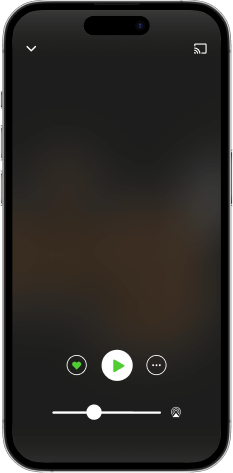

Journal of Clinical Oncology (JCO) Podcast
baixe o aplicativo,
ouça.









